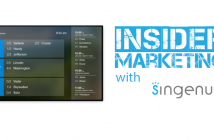Boosting your Quality Score will maintain or improve your ads’ positions, for less money. As with most Google algorithms, we don’t know the exact recipe, but we do know some of the important ingredients:
- click-through rate (CTR)
- landing page experience
- your historical AdWords account performance
- keyword and ad copy relevance
There’s no sugarcoating it—you’ll have to invest a significant amount of time if you want to deeply influence these factors to improve your Quality Score. But there are a couple quick ways you can move the needle:
- Populate your ad extensions: These are other relevant pieces of information that you can add to your text ads. They’ll help your ads entice potential customers with extra details about what you have to offer. (If you want to show off your Google+ cred, take advantage of review extensions.)
- Customize your display URL: Surprise! The URL shown in your ad does not need to be the same as the final page destination. As long as the root domain in the ad and your site are the same, you can make the display URL anything you want. URLs that closely mirror your ad content tend to generate higher CTRs than generic URLs.

Remember, these are quick fixes. For your AdWords to have lasting impact, you should focus on the four main tenets of your Quality Score.
Tip #4: Don’t be afraid to experiment
Would you rather run an AdWords campaign for “zip line Columbus” or “things to do in Columbus”? It’s the perennial question for those playing the AdWords game: do I go for the bigger audience or the cheaper keywords?
The answer to that is to first pursue keywords where you’ll provide the most relevant content, and you can find those through experimentation.
Think back to grade school when you learned the scientific method. It’s good practice to replicate those steps when testing your AdWords campaigns. To start, observe your customers and your competitors. Then ask probing questions about your ads, such as: “Are people within a 50 mile radius more likely to click my ads than people outside of that range?” Next, formulate a hypothesis: “I believe so because I mainly serve locals, and my out-of-town customers are more likely to book once they’re in-destination.”
Once you have your initial thoughts, you can test them by fiddling with your ads and audiences. What you find may surprise you. In Pingle’s case, she discovered that “ziplining” was far more popular a keyword than either she or the marketing agency had thought.
But keep a close watch to prevent your experiments from going awry. As a rule of thumb, kill experiments that tank after two weeks and go back to the hypothesis drawing board. Remember, there’s a place for hunches and gut-feelings in marketing—but AdWords is not it. As Tipton warned earlier, AdWords can be a punishing activity for the imprudent marketer.
Conclusion
Despite its complexity, AdWords can be an important sales tool. By following these easy steps, you can extract more value out of your campaigns without depleting your budget.






